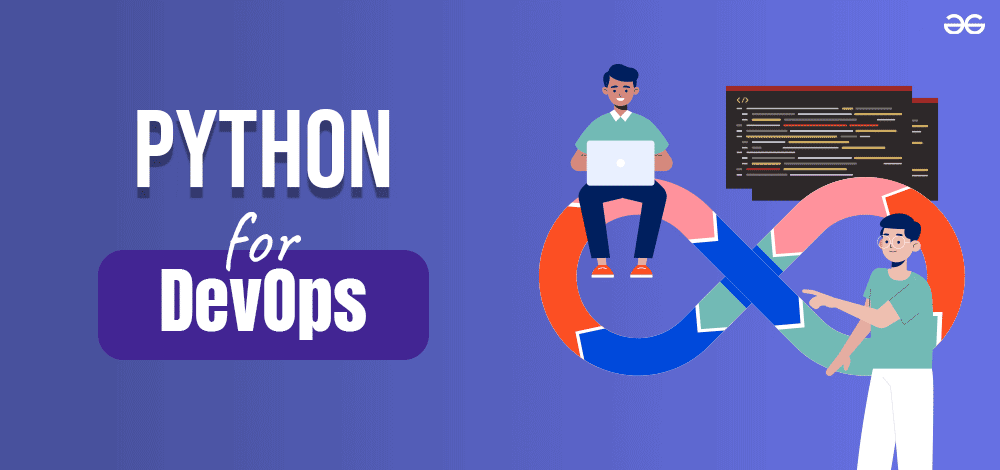Mastering DevOps Efficiency: Exploring Python Data Types and Data Structures (Day 14 Task)
 SWATHI PUNREDDY
SWATHI PUNREDDY
Maximizing DevOps Efficiency: A Guide to Python Data Types and Essential Code Snippets
In the fast-paced world of DevOps, mastering programming languages like Python can significantly enhance efficiency and productivity. Let's explore the fundamental concepts of Python data types and structures, along with essential code snippets relevant to DevOps engineers.
Understanding Python Data Types:
Python offers a diverse range of data types to accommodate various programming needs. Let's explore each type:
Numeric
Sequential
Boolean
Set
Dictionaries
1. Numeric: This category includes integers, floats, and complex numbers, providing support for numerical operations.
i. Integer: Integers are whole numbers, both positive and negative, without any decimal point. For example:
my_integer = 42ii. Float: Floats represent real numbers with a decimal point, allowing for fractional values.
For example:
my_float = 3.14iii. Complex: Complex numbers comprise a real part and an imaginary part, denoted by 'j'.
For example:
my_complex = 3 + 4j
2. Sequential:
Sequential data types include strings, lists, and tuples. These allow ordered collections of data, facilitating indexing and iteration.
i. String: Strings are sequences of characters, enclosed within single or double quotes, used for text processing. For example:
my_string = "Hello, World!"
ii. Lists:
Definition: Lists are ordered collections of items, where each item is assigned an index starting from 0. They are mutable, meaning their elements can be modified after creation.
Examples in DevOps:
Storing a list of server names or IP addresses.
Managing a list of packages or dependencies to install.
# Example of a list
servers = ['web1', 'web2', 'db1', 'db2']
iii. Tuples:
Definition: Tuples are immutable sequences, similar to lists, but their elements cannot be changed after creation. They are often used for fixed collections of related data.
Examples in DevOps:
Storing coordinates or dimensions.
Representing configurations that should not be modified.
# Example of a tuple
dimensions = (1920, 1080)
3. Boolean: Boolean data type represents truth values, True or False, crucial for logical operations and conditional statements.
For example:
my_boolean = True
4. Sets:
Definition: Sets are unordered collections of unique elements. They do not allow duplicate values. Sets are mutable, allowing for the addition and removal of elements.
Examples in DevOps:
Maintaining a set of unique server roles.
Tracking unique users or access tokens.
# Example of a set
server_roles = {'web', 'database', 'cache'}
5. Dictionaries
In Python are key-value pairs used for efficient data storage and retrieval. They allow you to associate unique keys with corresponding values. For example:
# Example of a configuration dictionary
server_config = {
'web_server': {
'ip': '192.168.1.100',
'port': 80,
'ssl_enabled': False
},
'database_server': {
'ip': '192.168.1.101',
'port': 3306,
'ssl_enabled': True
}
}
In this dictionary:
'web_server','database_server', etc., are keys.Each key is associated with a dictionary containing specific configuration details.
Dictionaries are commonly used for tasks like configuration management, where quick access to data based on a specific identifier (the key) is required.
Understanding Essential Code Snippets:
Now, let's dissect some crucial code snippets commonly used by DevOps engineers:
1. Configuration Management:
Storing configurations as tuples to prevent accidental modifications.
Using sets to manage unique configuration profiles or roles.
# Tuple for configuration
nginx_config = ('port', 80)
# Set for configuration profiles
config_profiles = {'development', 'production', 'testing'}
2. Infrastructure as Code (IaC):
Lists are commonly used to maintain lists of resources or resource properties.
Tuples can represent immutable specifications for infrastructure components.
Sets can ensure uniqueness in resource groups or tags.
# List of AWS EC2 instances
ec2_instances = ['web-server', 'db-server']
# Tuple for AWS EC2 instance specifications
ec2_instance_spec = ('t2.micro', 'us-east-1')
# Set of tags for AWS resources
resource_tags = {'app', 'environment', 'owner'}
4. Dictionaries for Configuration Management:
# Example of a configuration dictionary
nginx_config = {
'port': 80,
'server_name': 'example.com',
'ssl_certificate': '/etc/nginx/ssl/server.crt',
'ssl_certificate_key': '/etc/nginx/ssl/server.key'
}
- This dictionary stores configuration settings for an NGINX server, including port number, server name, SSL certificate, and SSL certificate key.
5. File Operations:
# Reading from a file
with open('config.txt', 'r') as f:
config_data = f.read()
- This code reads the contents of a file named
config.txtand stores them in the variableconfig_data.
# Writing to a file
with open('log.txt', 'a') as f:
f.write('New log entry')
- This code appends the string
'New log entry'to a file namedlog.txt.
6. Regular Expressions for Data Processing:
import re
# Extracting an IP address from log data
log_data = '10.0.0.1 - - [15/Feb/2024:12:34:56] "GET /index.html HTTP/1.1" 200'
ip_address = re.search(r'\d+\.\d+\.\d+\.\d+', log_data).group()
print("IP Address:", ip_address)
- This code uses a regular expression to extract an IP address from log data.
7. Shell Commands Execution:
import subprocess
# Executing a shell command
result = subprocess.run(['ls', '-l'], stdout=subprocess.PIPE)
print(result.stdout.decode('utf-8'))
- This code executes the shell command
ls -land prints the output.
8. API Calls for Cloud Services:
import requests
# Making an API call to AWS to list EC2 instances
response = requests.get('https://ec2.amazonaws.com/instances')
instances = response.json()
print("EC2 Instances:", instances)
- This code makes an API call to AWS to list EC2 instances and prints the response.
With these foundational concepts and essential code snippets, DevOps engineers can streamline workflows, automate tasks, and effectively manage infrastructure, ensuring smooth and efficient operations in their environments.
Subscribe to my newsletter
Read articles from SWATHI PUNREDDY directly inside your inbox. Subscribe to the newsletter, and don't miss out.
Written by
